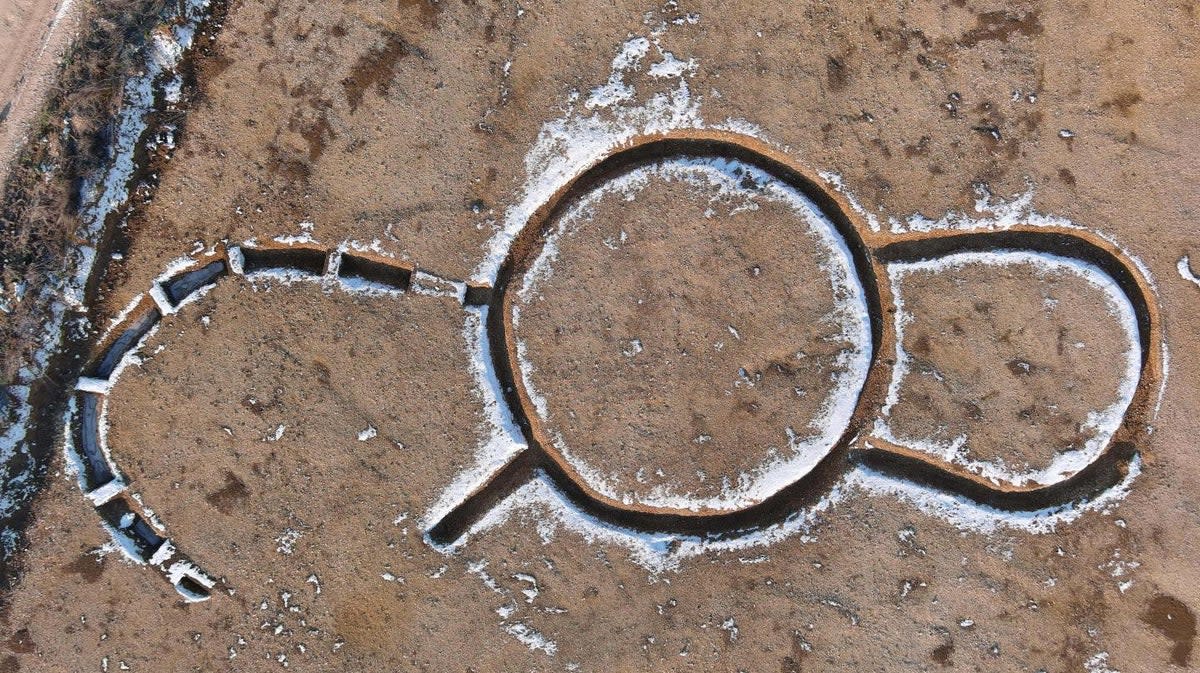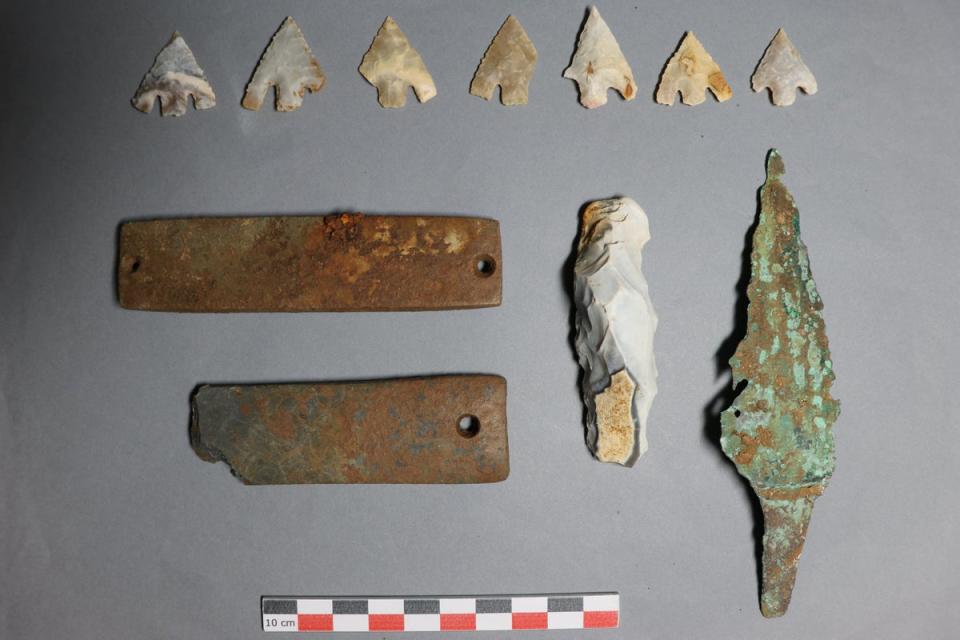France dig reveals mysterious horseshoe-shaped ancient monument containing weapons

Archaeologists have uncovered a strange horseshoe-shaped ancient monument in France containing a cache of weapons and ornaments dating across several historical periods.
The monument containing two horseshoe-shaped structures and a circular one of about 11 metres in diameter was discovered at Marliens in eastern France.
Researchers from the French National Institute of Preventive Archaeological Research called the finding “unprecedented” as no other similar ancient structure has previously been discovered.
The archaeological excavation in the Marliens area spanning 60,000sqm showed signs of occupation in the region from the Neolithic, or early Stone Age period, to the first Iron Age, which started around 1,200 BC.
At the monument, researchers also found numerous weapons, including several flint arrowheads, protective armbands worn by archers as well as a flint lighter and a copper-alloy dagger.

“The dating is still uncertain. However, the only artefacts discovered in the ditches correspond to carved flint that would suggest a chrono-cultural attribution to the Neolithic period,” researchers said, adding that analyses are underway to identify the exact periods to which the site belonged.
They suspect some of these artefacts may be traced to the Bell Beaker culture that emerged around 4,500 years ago, Archaeology Magazine reported.
Archeologists also found traces of “iron oxide” on one of the armbands corresponding to pyrite, an essential element to light a fire.
These objects, they say, mostly correspond to a burial. However, this hypothesis is yet to be confirmed.
Further analysis of the copper alloy of the dagger currently underway could make it possible to establish its origin and shed light on trade at that time.
Other constructions uncovered at the site include wells built during the Bronze Age as well as a necropolis with five circular enclosures containing burial remains and a funeral pyre.

Researchers also found an amber-beaded necklace, scattered pottery shards and copper-alloy pins in a part of the site dating to between 1500 and 1300 BC.
The last occupation of the site corresponds to a second necropolis about 400 metres away from the one previously described, where archaeologists found six incinerations dating to the first Iron Age.

